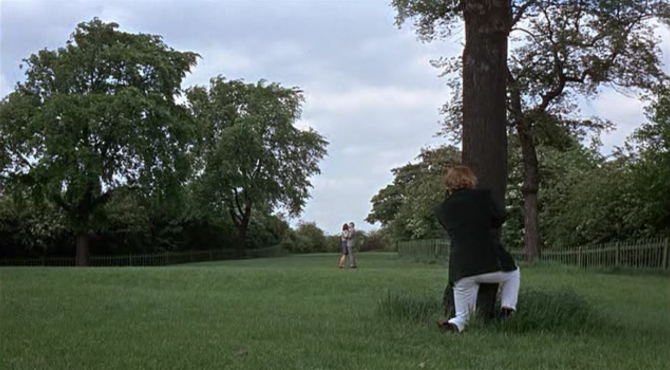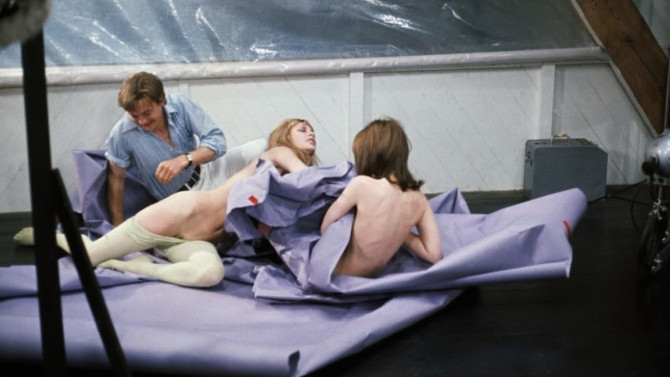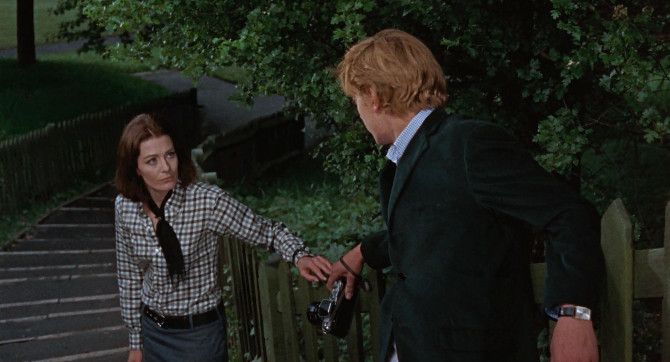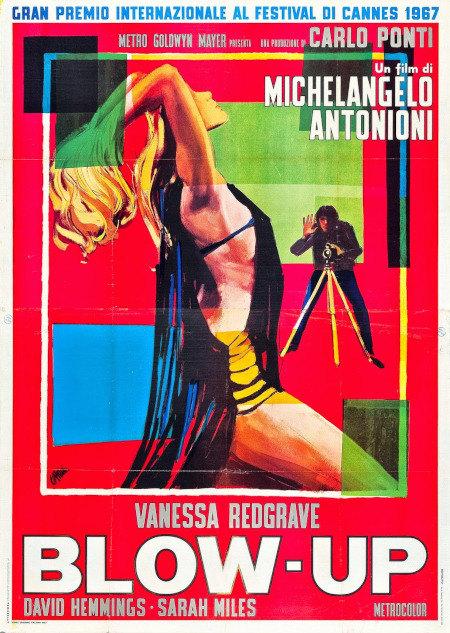 One of the most iconic films showing off 1960s London (specifically 1966) is intriguingly written and shot by an Italian, Michelangelo Antonioni’s Blowup (which is sometimes hyphenated or has a space between the two words), an abstract vision of this most unique and swinging time.
One of the most iconic films showing off 1960s London (specifically 1966) is intriguingly written and shot by an Italian, Michelangelo Antonioni’s Blowup (which is sometimes hyphenated or has a space between the two words), an abstract vision of this most unique and swinging time.
Seen through the eyes (or should I say camera – a sort of heightened reality) of famed photographer Thomas (David Hemmings), it is immediately noticeable that he is a walking juxtaposition. Both energetic and apathetic, he has more ups and downs than a roller coaster. Lacking passion or a proper plan, the story, like his unknown future aspirations, doesn’t follow a traditional plot pattern.
With an attention span that is akin to a fruit fly, the opening sequences demonstrate this. . . photographing a famous model (played by real life model Verushka), followed by a group of ladies, he quickly jumps ship to take a drive. . . deciding to enter an antique store (thinking of purchasing it. . . he will return again later to spontaneously buy a propeller), he then heads to a park. Almost like a stream of consciousness, we float along on this cloud of ennui with our protagonist.
It is at this part that the story becomes a bit more of a mystery/thriller, as Thomas begins to photograph a man and woman kissing in the park. Once again living the moment through his camera, he sees the images as a perfect bookend for his upcoming publication. Spotted by the woman, Jane (Vanessa Redgrave), her reaction is visceral. . . as she immediately storms the photographer – demanding the roll of film. As in a spontaneous live stage play, she soon returns from whence she came, panicking, she disappears in a flurry of dramatics.
Of course, she will track this passionless man down. . . desperate for these snaps. It is this genesis event that ignites some life back into him. . . a moment that jogs him out of his bland revery, returning him to the here and now, yet, it is fascinating that this whole experience is once again something realized by way of his camera – for he believes he has spotted the murdered body of the man she was kissing.
The film’s title stems from the process of blowing up an image – something Thomas does multiple times to get a better view of what he thinks is a body. . . and a shooter somewhere in the grassy knoll (or, in this case, some trees and. . . A SHRUBBERY!!! – oops, wrong British movie, that’s Monty Python and the Holy Grail). Despite this new passion, he still gets sidetracked. . . whether by two desperate-to-be-models (Jane Birkin and Gillian Hills) who he shags in one of his papyrus backdrops (clearly Austin Powers’ statement of “As long as people are still having promiscuous sex with many anonymous partners while at the same time experimenting with mind-expanding drugs in a consequence-free environment, I’ll be sound as a pound!” is clearly not the cure to ennui that people might think it is), or a venture into a hole in the wall nightclub (where the iconic rock band The Yardbirds perform. . . look for Jeff Beck trashing his guitar and future Led Zeppelin axe wielder Jimmy Page), all of this shows that even his newfound passion has its limits.
A story that is not about the destination, but rather about the journey (an artist’s melancholic lethargy. . . with some rejuvenation coming by way of his unexpected amateur sleuthing), this might be a tough watch for some modern viewers, who expect a flowing beginning, middle and end. In reality, this narrative, or lack thereof, drops you in without a true introduction, never truly provides you with that bow-wrapped conclusion, just giving you some of that possible murder mystery plot line in the middle. It puts the onus on the viewer: do we believe what our protagonist sees (is it a dead body and a gun in that dramatic shrubbery); is it a case of Thomas not living in reality – lost in his camera (tennis playing mimes at the end might have you wondering if this is all a figment of his imagination; could this actually all be a sultry affair – a woman desperate to cover-up her infidelity with a powerful man; or numerous other variations. Or, perhaps, the answer is right in the title. . . after all, if you blow up something, you will see it clearer. . . but if you continue to do so time and time again, all becomes blurry and unclear – our moment of clarity gone. In the end, it is for you to decide. . . though it doesn’t truly matter, rather, it is this vision of the unique subculture found within Swinging London that is the true reward – the working class streets, the underground drug induced parties, that mod fashion of this new age of youths, the rocking nightclubs, and so much more.
Featuring some full frontal nudity (actually some of that nudity is said to have disappeared – as projectionists snipped small portions of it away for their own private use), MGM smartly created a dummy company called Premiere Productions. . . something not beholden to the then still intact Production Code (that would usually censor big portions of a film like this). Able to release it intact, it immediately garnered rave reviews and filled theatres for a long while – its success the final nail in the coffin for this antiquated black and white way of passing or banishing movies. . . the Motion Picture Association of America would be created and replace it less than two years later, still in use today). The movie was not only influential in this way, for it also inspired a slew of other classics – Dario Argento’s giallo The Bird with the Crystal Plumage, Francis Ford Coppola’s The Conversation, and Brian De Palma’s Blow Out.
Describing Blowup himself, Antonioni explained, “I mean, a film you can explain in words, is not a real film”, that might just sum it up. If it wasn’t already obvious, it is also worth noting that this story is told through the director’s artistic camera work, not by its dialogue. . . in fact, Antonioni was so particular that he re-shot in the park after he had his team paint the grass a greener green (as it wasn’t the right shade). And, one final piece of information – this is the first film composed by the great Herbie Hancock. So, serve up this abstract slice of 60s London, just don’t blow up your screen. . . you don’t want to lose focus on this one.





